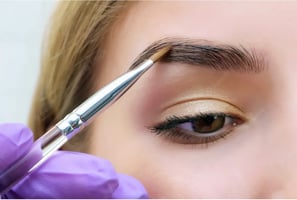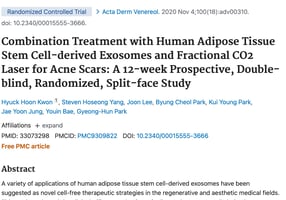Microblading is a popular beauty treatment that is gaining popularity in Canada. The treatment...
The Dos and Don'ts of Using an HSA for Cosmetic Treatments
When it comes to using your Health Savings Account (HSA) for cosmetic treatments, it's important to know the dos and don'ts. An HSA is a great way to save on medical expenses, but there are some specific rules around how it can be used for beauty treatments. In this blog, we'll cover the dos and don'ts of using an HSA for cosmetic treatments so you can make the most of your account.

DO use your HSA for medically necessary beauty treatments.
One of the biggest dos when it comes to using your HSA for beauty treatments is to use it for medically necessary treatments only. This means that the treatment must be prescribed by a medical professional and deemed medically necessary in order to be covered by your HSA. Examples of medically necessary beauty treatments that may be covered by your HSA include eyebrow microblading or nano brows to address alopecia, the treatment for acne or other skin conditions, and laser tattoo removal for medical reasons.
DON'T use your HSA for cosmetic treatments that are not medically necessary.
On the other hand, there are some treatments that are considered cosmetic and are not eligible for coverage under an HSA. These treatments are not considered medically necessary and are not eligible for HSA funds. Examples of cosmetic treatments that are not eligible for HSA funds include Botox injections, teeth whitening, and hair removal for cosmetic reasons.
DO Check with your HSA administrator to see what is and isn't covered
It's important to note that the rules for HSAs can vary depending on your plan, so it's always a good idea to check with your HSA administrator to see what is and isn't covered. Your HSA administrator should be able to provide you with a list of eligible expenses, as well as any specific guidelines for using your HSA for beauty treatments.
Do keep receipts and documentation for any beauty treatments you pay for with your HSA. This will be necessary in case you need to submit a claim for reimbursement.
It's essential to keep receipts and documentation for any beauty treatments you pay for with your HSA. This will be necessary in case you need to submit a claim for reimbursement. When you pay for a beauty treatment with your HSA, make sure to save the receipt and any other documentation you receive, such as a bill or statement from the provider. This will help ensure that you have all the necessary information on hand in case you need to submit a claim for reimbursement to your HSA administrator. By keeping your receipts and documentation organized and easily accessible, you can avoid any delays or complications when it comes time to submit a claim.
Do plan ahead and budget for beauty treatments that you know you'll need.
Planning ahead and budgeting for beauty treatments that you know you'll need is a smart way to make the most of your HSA. An HSA can be a great way to save for and pay for these expenses, but it's important to make sure you have enough money in your account to cover the costs. Consider setting aside a specific amount of money each month to put into your HSA, so that you have the funds available when you need them. You can also review your HSA balance regularly to make sure you have enough money to cover upcoming beauty treatments. By planning ahead and budgeting for your beauty expenses, you can make sure that you can use your HSA to save on taxes and take care of your health and appearance.
Don't use your HSA to pay for non-qualified medical expenses, such as cosmetic surgery that is not medically necessary.
It's important to be aware of the rules and restrictions of using an HSA to pay for beauty treatments. One of the key things to remember is that you should not use your HSA to pay for non-qualified medical expenses, such as cosmetic surgery that is not medically necessary. These expenses are not eligible for reimbursement through an HSA, and using your HSA to pay for them could result in penalties and tax liabilities. In general, it's best to consult with your HSA administrator and carefully review the rules and guidelines before using your HSA to pay for any beauty treatments, to make sure that the expenses are eligible for reimbursement. By avoiding non-qualified medical expenses, you can help ensure that you can use your HSA to save on taxes and take care of your health and appearance without running afoul of the rules.
Don't forget to check with your HSA provider before using your account to pay for beauty treatments.
Different providers may have different rules and guidelines regarding what is considered a qualified medical expense.
Don't wait until the last minute to pay for your beauty treatments with your HSA. If you need to submit a claim for reimbursement, it can take time for the claim to be processed and the money to be credited to your account.
In conclusion, using an HSA for beauty treatments can be a great way to save on taxes and take care of your health and appearance. However, it's important to understand the rules and restrictions of HSAs, as well as what expenses are eligible for coverage. By following the dos and don'ts outlined in this blog post, you can make the most of your HSA and enjoy the benefits of both tax savings and beauty treatments.





